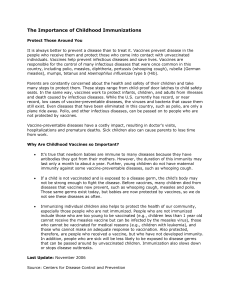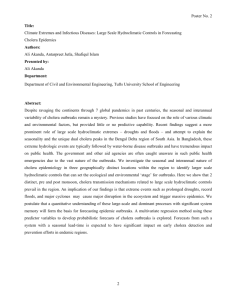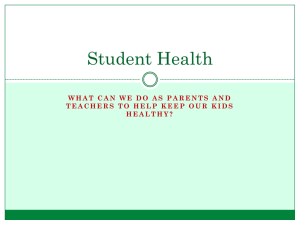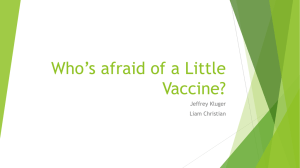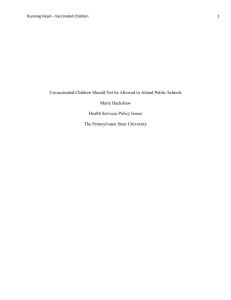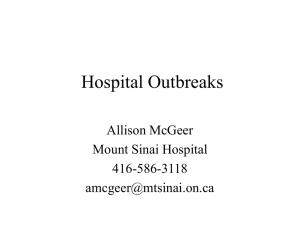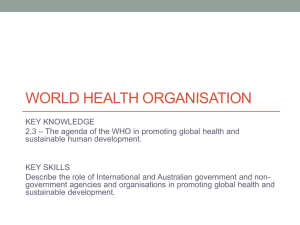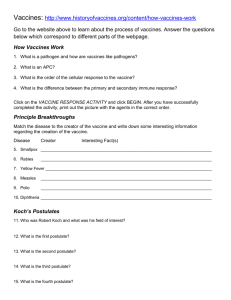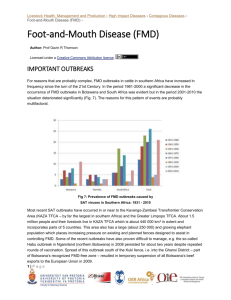First Article - WordPress.com
advertisement
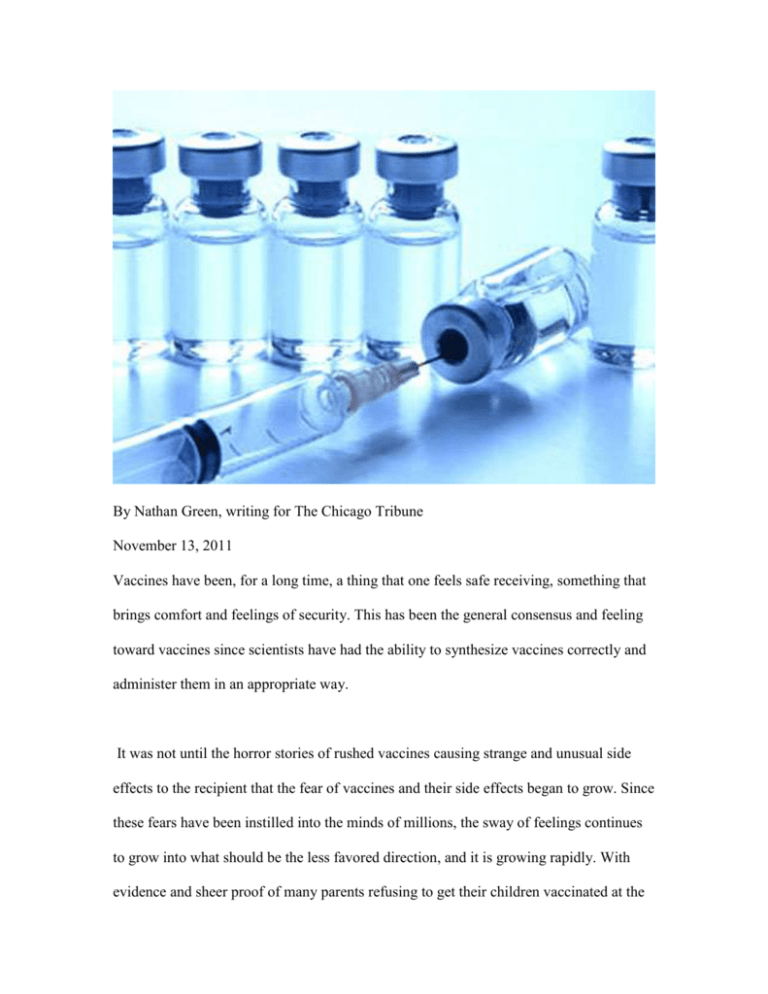
By Nathan Green, writing for The Chicago Tribune November 13, 2011 Vaccines have been, for a long time, a thing that one feels safe receiving, something that brings comfort and feelings of security. This has been the general consensus and feeling toward vaccines since scientists have had the ability to synthesize vaccines correctly and administer them in an appropriate way. It was not until the horror stories of rushed vaccines causing strange and unusual side effects to the recipient that the fear of vaccines and their side effects began to grow. Since these fears have been instilled into the minds of millions, the sway of feelings continues to grow into what should be the less favored direction, and it is growing rapidly. With evidence and sheer proof of many parents refusing to get their children vaccinated at the medically accepted age by a qualified physician, it is no wonder that spikes in infections of measles and TB have risen dramatically, as of late. Although the blame for these outbreaks can not be solely placed on the lack of vaccines being administrated to children, as many adults have been contracting these viruses as well, mostly when traveling from places in Europe back to the United States. The combination of these two factors has led to the highest amount of cases of the measles in the United States since 1996, according to data released at a meeting of the Infectious Diseases Society of America. Many speculate on the significance of these outbreaks, which are miniscule when compared to population sizes and what is generally accepted as “epidemic” status population infection. However, these outbreaks, although small when looked at on a large scale, have the ability to turn into epidemics if the correct precautions are not taken. The majority of the outbreaks have been occurring in parts of Europe, but when people go visit these countries, there are the occasional few who are not vaccinated and contract these viruses, bringing them back to the states and possibly spreading them in the United States or other countries as well. With the recent decrease in the amount of vaccinations administered to children and adults alike, these “carriers” of these viruses from other countries could potentially start an outbreak, which in turn could create an epidemic, with due time. “The Centers for Disease Control and Prevention in Atlanta collected data that concluded that 86 percent of the people in the United States that have contracted measles this year have been unvaccinated”(sciencenews.org). This is irrefutable evidence that the nonvaccinated do play a large roll in the outbreaks that have already occurred. Some may be asking themselves, “How is this a problem? I thought most people get vaccinated?” However, more people may not be getting vaccinated than one may think. According to a sciencemag.org article pertaining to this subject, Physicians Chris Harrison and Tom Tryon of the University of Missouri in Kansas City presented data from a survey of more than 900 pediatricians in nine states showing that 21 percent stopped accepting appointments from families that refused to have their children vaccinated. In Minnesota that rate was only 1 percent, but in Iowa it was closer to 38 percent. This data suggests that the denial of vaccinations has become an intrusive thing in the field of medicine, so intrusive that measures were made to try and shape the direction of these decisions into the way seen medicinally accurate. Europe seems to be the catalyst for these outbreaks, seeing as to how they have the largest amount of outbreaks with the largest amount of people involved in them, according to an article on reuters.com. The reasoning behind the increased amount of outbreaks in Europe is unknown, but most agree that measures should be put into place to deter the effects these outbreaks have on humanity.
